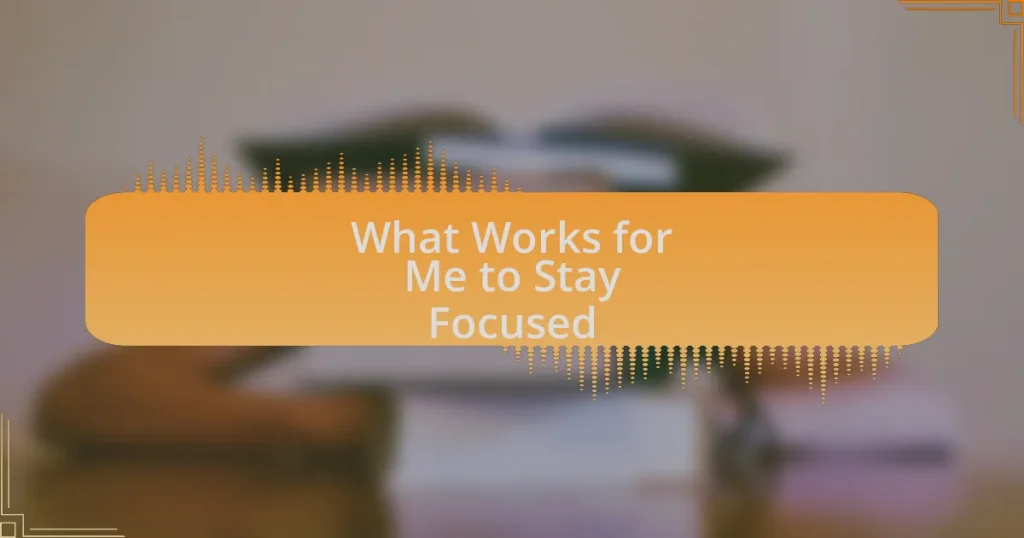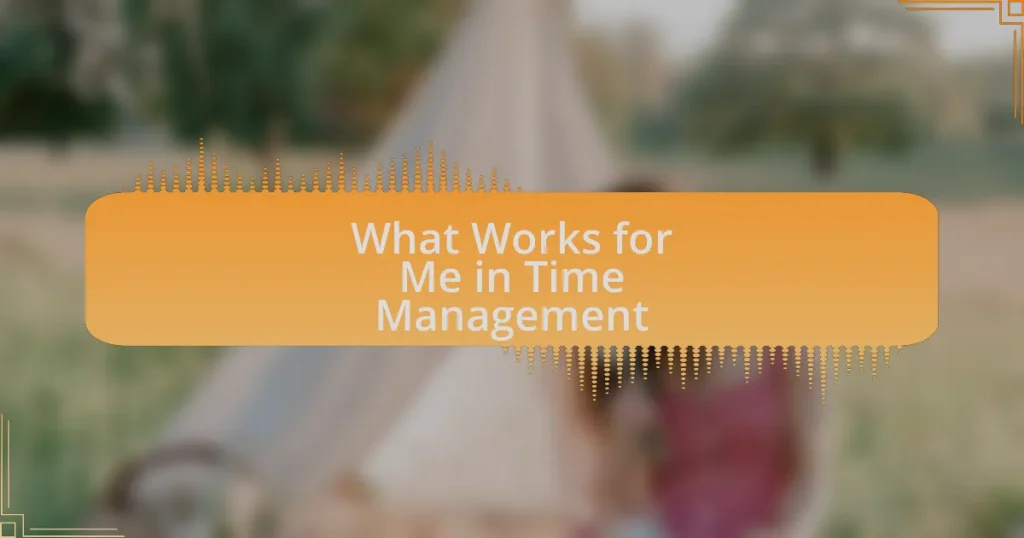Key takeaways:
- Engaging dialogue reveals character emotions and intentions, propelling the narrative and enhancing reader connection.
- Subtext, authenticity, and unique character voices are essential for creating dynamic, relatable dialogue that resonates with readers.
- Techniques such as incorporating interruptions, using silence strategically, and varying speech patterns can improve the realism and emotional depth of dialogue.
- Utilizing writing tools and collaborative feedback can enhance dialogue crafting and help refine a writer’s voice.
Author: Evelyn Hartwood
Bio: Evelyn Hartwood is a contemporary novelist known for her compelling narratives and richly drawn characters. With a background in psychology, she explores the complexities of human emotion and relationship dynamics within her stories. Evelyn’s debut novel, “Whispers of the Heart,” received critical acclaim and was shortlisted for several literary awards. When she’s not writing, she enjoys hiking in the mountains and experimenting with new recipes in her kitchen. Evelyn resides in Asheville, North Carolina, where she draws inspiration from the vibrant arts community and the breathtaking natural landscape.
Understanding engaging dialogue
Engaging dialogue isn’t just about speaking; it’s about connecting. I remember when I first started writing dialogue in my stories, trying to mimic what I thought real conversations should sound like. But I soon realized that the most compelling dialogue reflects not just words, but the emotions and intentions behind them. Have you ever noticed how a single line can change the mood of a scene?
The essence of strong dialogue lies in its ability to reveal character and drive the narrative forward. For instance, when I wrote a particularly tense scene between two characters who held opposing views, I intentionally let their words clash, revealing their inner turmoil while also pushing the plot. It’s fascinating how one character’s hesitation or eagerness can create a ripple effect in the dialogue, isn’t it?
I find that listening to conversations in everyday life can greatly enhance my writing. Observing the nuances—like pauses, interruptions, and the rhythm of speech—can transform a flat exchange into something dynamic. When I incorporate these elements, I feel my characters truly come alive, making it easier for readers to connect and empathize. How do you capture those real-life moments in your own writing?
Importance of dialogue in writing
Great dialogue serves as a window into a character’s soul. I vividly remember a scene where a character revealed their deepest fear through a simple exchange with a friend. That moment deepened my understanding of how dialogue can create vulnerability, allowing readers to connect on an emotional level. Have you ever found yourself drawn to a character because of a single line they said? It’s those moments that linger, turning words into a memorable experience.
The power of dialogue also lies in its ability to propel the story. Back when I worked on my first novel, I realized that conversations can replace lengthy exposition, creating a more dynamic pacing. I crafted a quick back-and-forth between two protagonists that not only conveyed crucial information but also heightened the tension. This made me wonder: how often do we overlook dialogue as a means of storytelling? Using dialogue effectively can keep readers engaged and eager to find out what happens next.
Furthermore, dialogue can establish the tone of your narrative and the world your characters inhabit. I once wrote a character who spoke in quick, clipped sentences, contrasting sharply with another character’s flowing, poetic language. This difference wasn’t just stylistic; it showed their personalities and backgrounds without explicitly stating it. How do your characters’ dialogues reflect their unique traits? Understanding this can add layers of depth to your writing, making your story resonate with readers long after they’ve turned the last page.
Key elements of engaging dialogue
When crafting engaging dialogue, one key element is authenticity. I recall a time when I wrote a conversation between two siblings reminiscing about their childhood. Their playful banter felt so real to me, as I drew from my own sibling experiences. It’s crucial that dialogue sounds true to the characters; readers can often sense when words feel forced or unnatural, and this can pull them out of the narrative.
Another important aspect is subtext—the underlying meaning behind spoken words. I once penned a tense exchange where one character was apologizing while the other remained silent. The unsaid thoughts were charged with emotion, hinting at unresolved conflict. This idea of what isn’t said can often speak louder than what is voiced. Have you ever found yourself reflecting on a conversation that lingered in your mind, not for the words spoken, but for the feelings evoked? That’s the magic of effective subtext in dialogue.
Moreover, variation in speech patterns can enrich character development. In one of my short stories, I gave each character distinct speech quirks—one spoke in long, flowing sentences while another favored short, abrupt responses. This not only brought their personalities to life but also added a rhythm to the dialogue. How do your characters’ unique voices help paint a fuller picture of their identities? This complexity makes the dialogue more engaging and relatable, drawing readers deeper into the story.
Analyzing examples of strong dialogue
When analyzing strong dialogue, I often look for moments where characters express their emotions through their words. For example, in a recent story I wrote, a character revealed their insecurities while discussing their dreams with a friend. The way they hesitated, choosing words carefully, created a palpable tension that resonated with readers. Isn’t it fascinating how a single sentence can encompass a whirlwind of feelings?
Consider the impact of pacing in dialogue. I once experimented with a fast-paced conversation between two friends caught up in excitement, their lines overlapping and intertwining. This frenetic energy pulled readers into the moment, making them feel as if they were part of the scene. Have you ever felt your heart race while navigating an intense exchange? That’s the power of rhythm in dialogue.
Another layer to explore is how setting can inform dialogue. In one scene set in a crowded café, the ambient sounds influenced how characters spoke to each other. Their voices had to rise above the clatter, reflecting urgency and intimacy simultaneously. This awareness of the environment not only enhanced the dialogue but also grounded it in a vivid reality. How does your setting shape the conversations in your writing?
My personal dialogue writing tips
When it comes to crafting engaging dialogue, one of my go-to strategies is to really listen to how people speak in real life. For instance, during a recent coffee shop writing session, I overheard a couple discussing their weekend plans. Their back-and-forth featured interruptions, laughter, and moments of genuine surprise, which inspired me to incorporate that natural flow into my characters’ conversations. Isn’t it amazing how real-life moments can add depth to fictional dialogue?
Another essential tip is to give each character a unique voice, reflecting their background and personality. I remember writing a scene between a street-smart teen and a refined older woman. The contrast in their speech patterns added layers to their interaction, highlighting their differences and creating a rich dynamic. This not only enriched the dialogue but also made me wonder: How can you ensure that each character’s voice is distinct and memorable?
Don’t forget the power of subtext—what’s unsaid can often be more impactful than what’s spoken. There was a moment in my writing where two characters were having a seemingly mundane conversation about the weather, but beneath the surface, tension simmered due to a past argument. That hidden layer drew readers in, sparking curiosity about their true feelings. Have you ever noticed how the most captivating dialogues often leave you wanting to read between the lines?
Techniques for improving dialogue
One effective technique I’ve found is to incorporate interruptions and overlapping dialogue. I recall writing a tense scene where two friends were arguing but couldn’t stop talking over each other. The resulting chaos mirrored real-life conflicts, making the exchange feel raw and immediate. It got me thinking: how often do we leave things unsaid in the heat of a moment, and how can that influence the drama in your writing?
Another technique is to use silence strategically. I once crafted a scene where the characters shared a contemplative moment after a heated discussion. The silence that followed was thick with emotion, revealing more about their relationship than any words could convey. This led me to ask myself: how can pauses and unspoken thoughts serve to enhance the emotional weight of my dialogue?
Finally, I like to play with regional dialects and slang to add authenticity. When writing about a group of friends from different parts of the country, I mixed various speech patterns and colloquialisms, which not only highlighted their backgrounds but also made interactions feel real and relatable. It makes me wonder: how can the way we speak reinforce the essence of where we come from and the experiences we’ve had?
Tools to enhance dialogue writing
To enhance my dialogue writing, I often turn to software tools like Scrivener and Final Draft. These platforms not only help organize my thoughts, but they also offer formatting assistance for scripts and screenplays, ensuring that my dialogue reads smoothly on the page. For example, when I was drafting a screenplay recently, I appreciated how easy it was to switch between character names and dialogue blocks, which kept my creative flow intact.
Additionally, I find that using audio recording apps can transform my approach. Sometimes, I read my dialogue aloud, capturing the rhythm and pacing of speech. Recording these sessions not only allows me to hear where the dialogue may falter but also helps me identify patterns, inflections, or even pauses that might add depth. Reflecting on my experiences, I can’t help but wonder: how often do we overlook the importance of hearing our words before committing them to paper?
Finally, many writers swear by collaborative tools like Google Docs for gaining feedback on dialogue sections. I’ve shared drafts with fellow writers and gleaned invaluable insights from their reactions. Watching their facial expressions while reading offered clues about which lines resonated and which fell flat. This leads me to think: how can sharing our work and engaging in dialogue with others refine our voices and elevate our craft?



